Independence Palace
The Nordorom Palace in Saigon, Later Becoming the Reunification Palace
Reunification Palace Ho Chi Minh City
Inner Room of Reunification Palace in Ho Chi Minh City
Independence Palace
Weather :
Label : Top Attraction
Tags : Forts & Palaces
Time Required : 2 - 3 hours
Opening Hours : 7:30 AM to 11:30 AM and 13:00 PM to 16:00 PM.
Entry Fee : Adults - VND 40,000
Children - VND 20,000
Also Refered As:
Reunification Convention Hall
Ways to Experience this attraction
HCM: War Remnants Museum & Independence Palace Walking Tour
2.0 hour
Deals start ₹2,269
VIEW DEAL
War Remnants Museum and Independence Palace Walking Tour
2.0 hour - 4.0 hour
Deals start ₹1,173
VIEW DEAL
City Tour By Motorbike w/ War Museum & Reunification Palace
4.0 hour
Deals start ₹2,050
VIEW DEAL
HCMC: English or German War History Tour: Tunnels & Museums
9.0 hour
Deals start ₹9,900
VIEW DEAL
Ho Chi Minh City: Saigon City Half-Day Tour
4.0 hour
Deals start ₹2,220
VIEW DEAL
Ho Chi Minh City: Best Seller of Half Day City Trip
4.0 hour
Deals start ₹2,989
VIEW DEAL
Reunification Palace, Ho Chi Minh City Overview
The Reunification Palace, also known as Independence Palace, was once the home to the president of Southern Vietnam during the Vietnam War and the site of the end of the Vietnam War. Originally called Norodom Palace, it is now an iconic museum in Ho Chi Minh City. You can wander the grand halls and explore the underground tunnels and bunkers used during the war. A free guided tour is available.
Read More on Reunification Palace
How to Reach the Reunification Palace
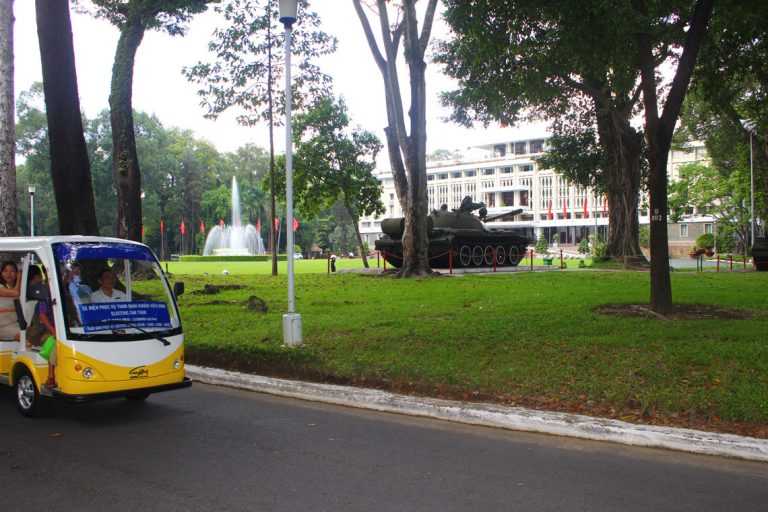
The Reunification Palace is situated at a prime spot in Central Saigon. The address is 135, Nam Ky Khoi Nghia street, District 1, Ho Chi Minh City, Vietnam. For those staying in hotels in District 1, the palace is a 20-minute walk, otherwise a bus can be taken directly to the centre station.
Reunification Palace Architecture
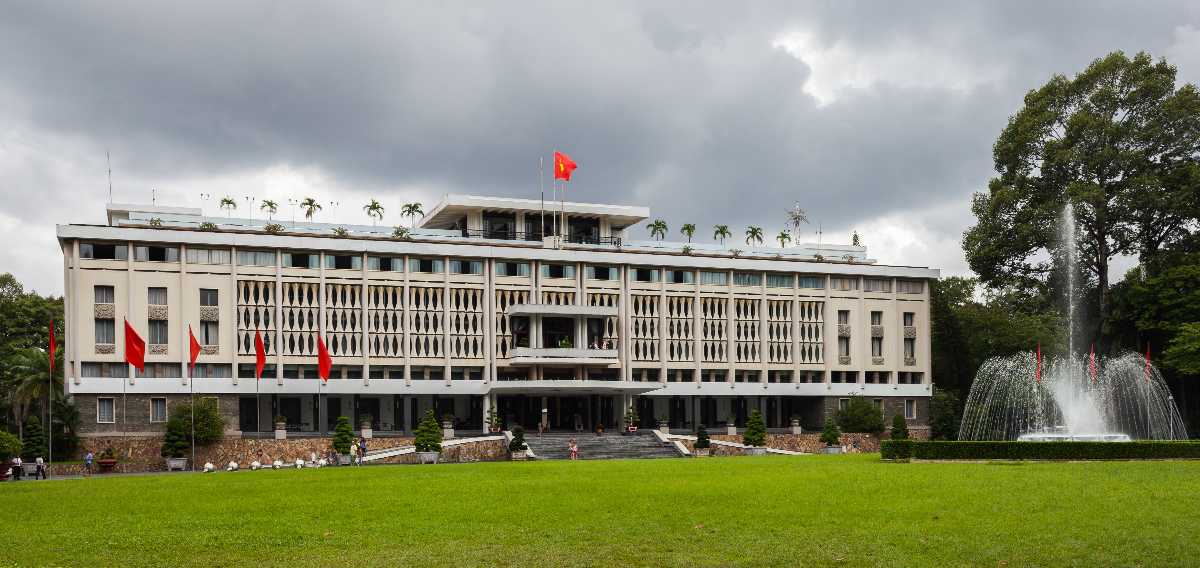
The architecture does a great job of putting the Reunification Palace's interesting history on display. Covering an area of 12 hectares, the monument is spacious and airy. The palace grounds are lush green and surrounded by trees and two of the original tanks that broke through the gates are still parked there.
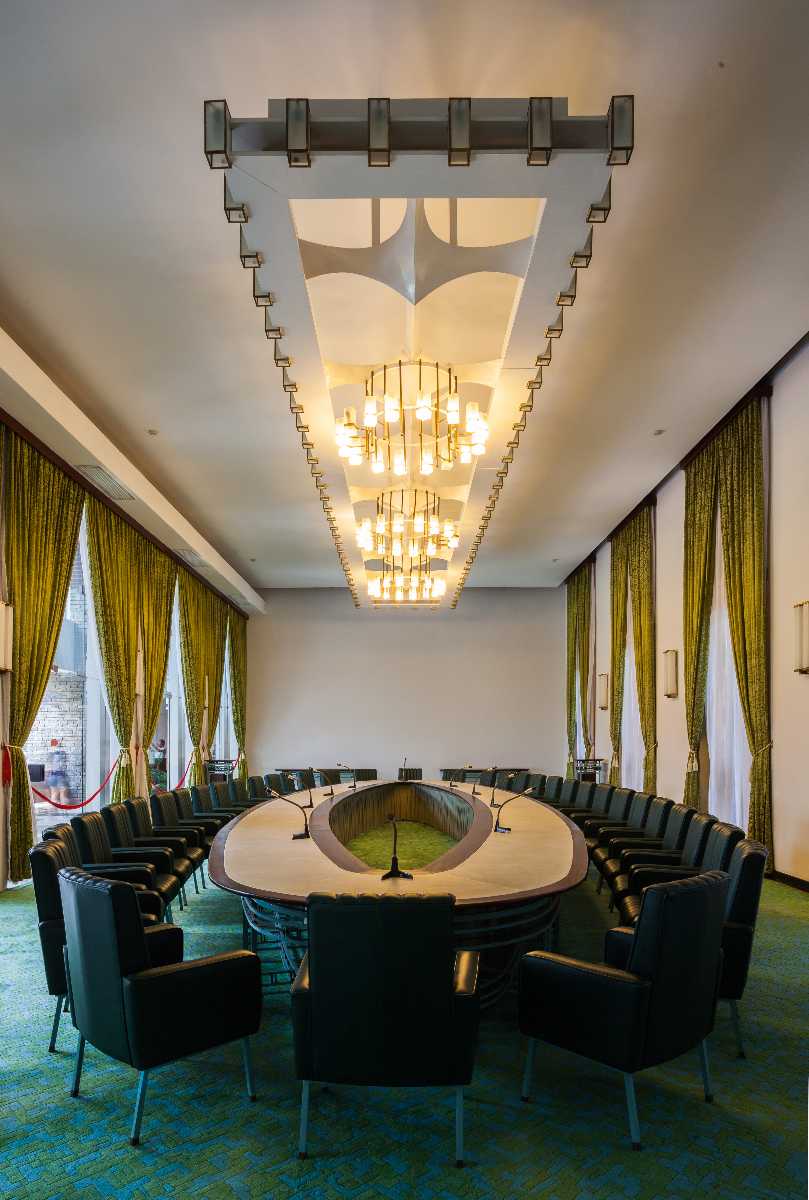
(Source)
The inside of the palace is grand. Composed of five floors, the ground floor has a set of rooms used for meetings and other events. The other floors have a bunch of rooms with antique furniture and all the other possessions on display in a museum like fashion - behind red ropes. The otherwise plain-looking concrete structure is extremely fancy on the inside, replete with a game room, a library, a cinema, a rooftop club and even a helipad.
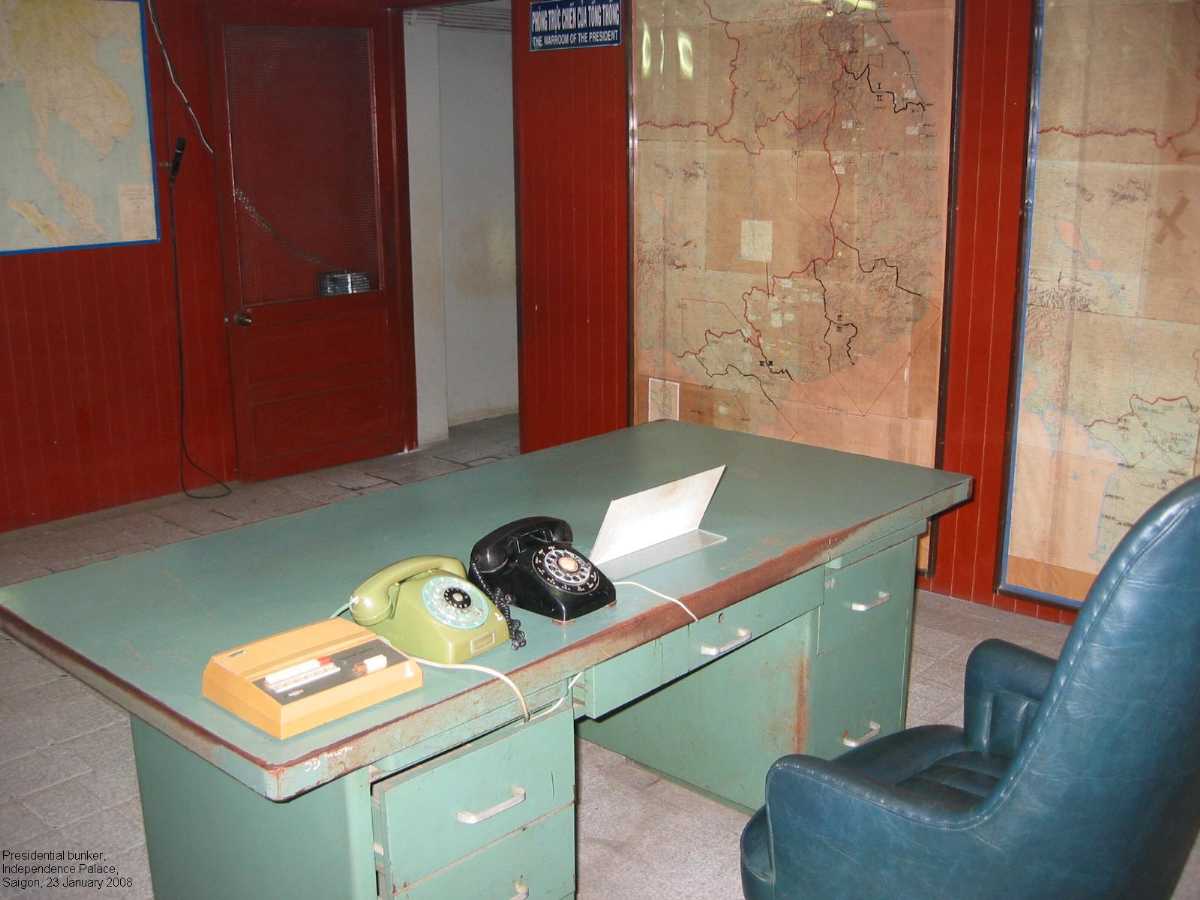
Construction (Source)
The most interesting part of the palace is the basement which is exactly like a time-capsule. Built as a bomb shelter, the bunker still has ancient radio equipment, old fans, strategy war maps on the wall and an underground tunnel network. The tunnels are off-limits to the public.
Reunification Palace History and Significance
_20190107172756.jpg)
General of Indochina (Source)
Black and white photos of that era show a very different structure from what we see now. The monument that stands today was not built until 1966. The Independence palace was initially called the Norodom Palace. Built in 1873 by the French, the palace was named after the King of Cambodia, Norodom. The palace was, for a brief period-of-time, the residence of the Governor of Cochinchina. Since then the building changed hands frequently as the political situation in Vietnam grew volatile.
World War 2 and Vietnam War
In 1945, the Japanese took over the palace after defeating the French. But it wasn't long before Japan was defeated and by the end of World War 2, the French regained control of the palace. However, it was not too last. The French saw defeat again in 1954 at the battle of Dien Bien Phu. The palace was then handed over to South Vietnam’s president, Ngo Dinh Diem. In 1955, Diem moved in and renamed it to Independence Palace. It was during Diem's time that the palace went under a complete makeover. Diem didn't live to see the new palace. He was assassinated in 1963. The palace then on became a residential quarter for the future presidents of South Vietnam; that is until 1975.
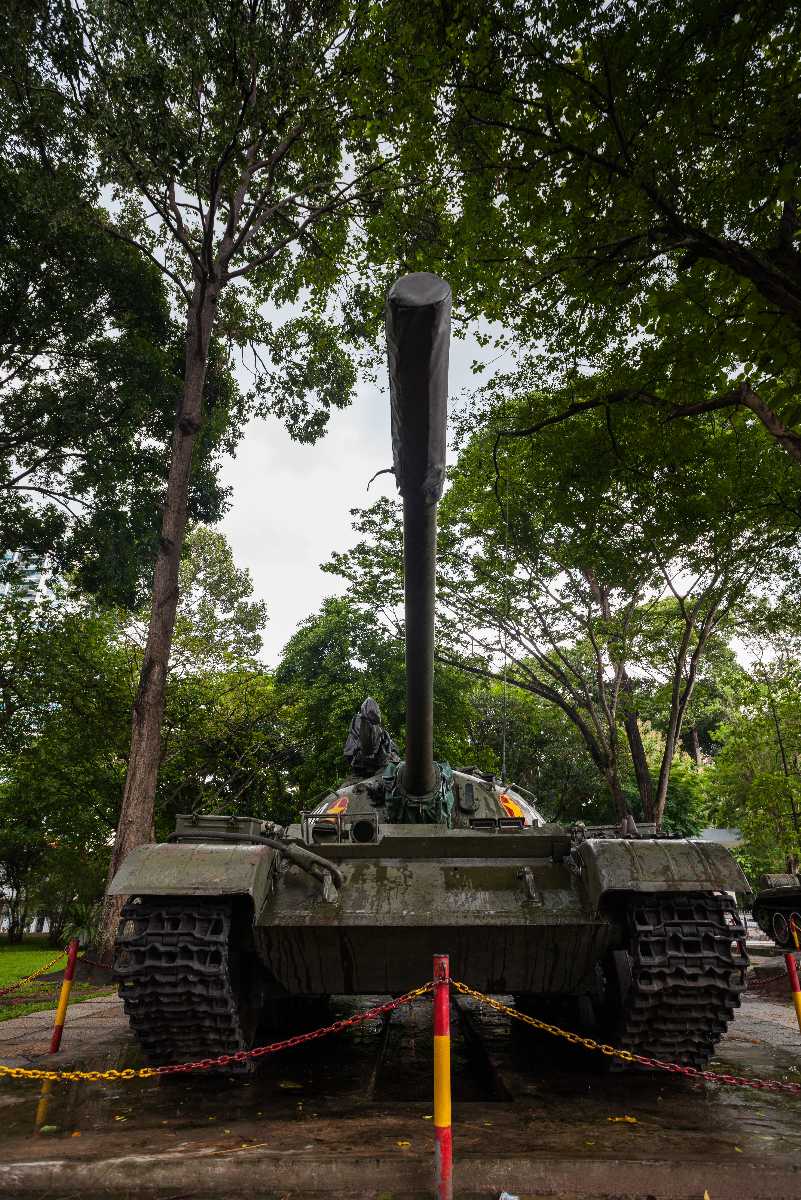
to the End of the Vietnam War, Rechristened as the Reunification Palace (Source)
History was created at the iron gates of the palace's building when a Vietnamese tank crashed into it at 10:45 AM on 30th April 1975. It was at this very moment that the Vietnam war came to an end. It was finally time for peace and the monument was renamed to Reunification palace, a name that remains to this day.
Tips on Visiting Reunification Palace
- The palace, otherwise open 365 days of the year, is sometimes closed to the normal public in case of VIP visits or other special events.
- There is a security check at the entry point. While luggage is to be left with security, small bags can be taken inside. Dangerous objects aren't allowed.
- For history buffs, guided tours of the palace are available in English, French and a few other languages.
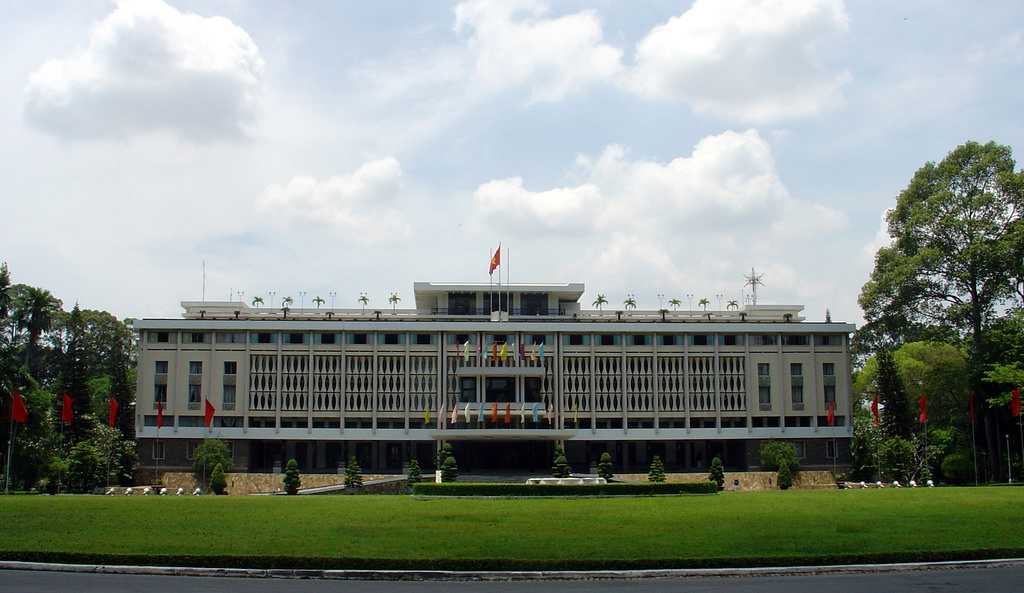
Today, the Reunification Palace at Ho Chi Minh City stands tall, carrying battle scars and holding the remnants of one of the darkest periods in Vietnam's history. Extremely well-preserved, it is a must-visit for history enthusiasts.
Reunification Palace Dress Code
There is no dress code as such for visiting the Reunification Palace. However, wearing something polite is suggested.
Top Hotel Collections
Top Hotels Near Reunification Palace
Reunification Palace Reviews

Your rating
Have a Question on Reunification Palace?

experience.